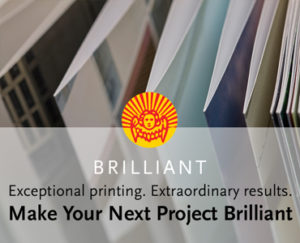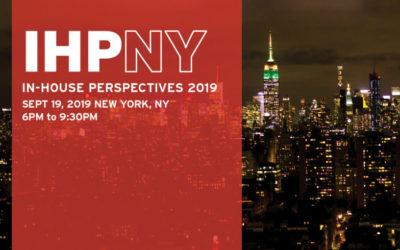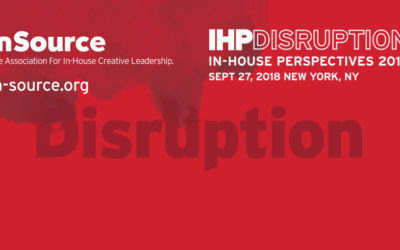Question: What is the number one challenge of in-house creative professionals in the corporate setting, according to a recent survey of peers? Answer: “Staying fresh and innovative.” Innovation was the focus of an in-depth discussion for the InSource community by panelists James Barrood, Gordon Kaye, and Bob Wagner. Sheree Clark served as facilitator throughout the half-day event held at Fairleigh Dickinson University in Madison, New Jersey, on Tuesday, April 3, 2007.
Highlights from “Driving Innovation Through Design”
Innovation is the driving force for business success among creative managers in the corporate setting, according to a panel of speakers who were the catalysts for lively discussions among participants at an InSource event for in-house creative professionals. This event was held on Tuesday, April 3, 2007, at Fairleigh Dickinson University’s College at Florham Campus in Madison, New Jersey.
James Barrood (Executive Director of the Rothman Institute of Entrepreneurial Studies at FDU’s Silberman College of Business), Gordon Kaye (Publisher/Editor of Graphic Design USA, a monthly news magazine for creative professionals) and Bob Wagner (Vice President of Creative Services Business and Premier Partners at the Xerox Corporation) offered their insights on what creative professionals can do in promoting innovative thinking in the workplace and how to position design teams as part of the process of innovation within an organization. Sheree Clark (Creative Consultant and Managing Partner of Sayles Graphic Design) served as facilitator throughout the half-day event to help keep everyone focused on the practical implications for in-house creative managers and their teams.
Insights from an Academic Perspective
Thomas Edison was described as “a great businessman, collaborator, and inventor” during the prepared remarks by James Barrood. Identified as the inventor of the light bulb, his better invention was that of the power station and the metering system. Edison did not actually invent the light bulb, rather he competed with over 20 other inventors in developing a better light bulb. He also filed over 1000 patents, of which only 1% were successful. Learning from failure was his methodology. His impetus was to make money; creating demand for his vision for electricity was a driving force. He became a millionaire before the age of 40.
“Innovation is more than a buzzword,” declared James, who prefers the 1971 textbook definition of innovation as useful invention. “Innovation is critical for success.”
James provided a diagram of the innovation process, highlighting the need for creating a learning environment in the workplace. He elaborated on the concepts of “sustaining as well as disruptive innovation” (which leads to creating new markets or reshaping existing markets) developed by Clayton Christensen and “open innovation” (which embraces external ideas as well as internal ideas) brought forward by Henry Chesbrough. These kinds of innovation can be regarded as useful paradigms to better understand this important topic.
“Partnerships are the key,” added James, who described various types of innovation in terms of finance, process, offerings, and delivery according to the work of Jay Doblin. He maintained, “We need to work with smart people inside and outside of the company, leveraging design expertise as an important part of innovation.”
James offered the following suggestions to help creative professionals add more value and increase the relevancy of design in the workplace:
• Take the initiative to understand innovation efforts in your company, differentiating spin from substance and identifying who are the movers in this area.
• Educate yourself and your team on innovation.
• Network with others and become an opportunity seeker/idea screener.
• Become part of any innovation teams/new ventures in your company.
• Offer to research new ideas and markets.
• Develop an understanding of the marketplace, including changing dynamics/paradigms in your industry.
• Bring new ideas to the table, including ones that imitate and modify the good ideas of others.
James pointed out that Edison had more than 100 partnerships in his day. Collaboration remains a powerful tool today. A modern-day example of this is Steve Jobs, who has a reputation for bringing ideas together. Visit FDU for online innovation lectures by Christensen and Chesbrough and more information about the work of the Rothman Institute of Entrepreneurial Studies.
Insights from Peers in the Design Industry
“Staying fresh, innovative and informed of cutting-edge developments is considered a major challenge among creative professionals,” said Gordon Kaye, who shared some of his candid perceptions working as a lawyer at NBC (including serving as an attorney for Saturday Night Live!). “The current practices to deal with this challenge are somewhat predictable, heavily constrained by time, budget and imagination, and rarely systematic.”
Now working in a leadership role with GD:USA , Gordon makes it his business to find out what creative professionals in the design industry are thinking and feeling these days. He reported on the results of recent GD:USA surveys, noting that “Staying Fresh and Innovative emerged as the number one challenge, once all our reader surveys were tabulated,” said Gordon. “Staying on the Cutting Edge of Technology finished high as well.”
Other survey findings include the following:
• The biggest challenges unique to working in a corporate setting are justification of existence and value; marketing capabilities to management; staying fresh and innovative in creativity and design trends; hiring, rewarding, training, and retaining quality-driven people; and staying informed about cutting-edge products, services, and technologies.
• Although in-house designers confess that they are often discouraged by the limitations of time and resources for innovation in the corporate setting, they have identified the following ways to remain fresh, innovative and informed:
> Read design media and surf the Web to see what others are doing.
> Talk to vendors (especially printers and paper people).
> Attend conferences whenever resources allow.
> Break out of the routine with personal field trips (visits to museums or other places of art inspiration) or take the day off for fun.
> Build systematic mechanisms to gain different perspectives (including interactions with designers at other affiliated business units and studying what other companies do with a similar project).
> Enter design competitions (both internal and external).
> Create two or three versions of each solution, with at least one that reflects “out-of-the-box” thinking that pushes the envelope.
> Seek divine inspiration (prayer/meditation was named specifically).
“The consensus among creative professionals is that staying fresh and innovative is an uphill battle,” added Gordon. “It’s about attitude,” he said, noting that the language used by designers includes such words as “patience,” “persistence,” “self-sufficiency” and “commitment to excellence,” with “sad,” “resigned” and “disheartened” also part of the mix.
Gordon observes the need for designers to better connect with others. He acknowledges various interpersonal dynamics at work in the corporate setting, including the emergence of such factors as “familiarity breeds contempt” and “everyone thinks they can do design themselves or find others to do it cheaper and faster” as juxtaposed with various success stories where design earns its seat at the table.
Insights from a Technology Perspective
A self-described evangelist for digital printing, Bob Wagner made a presentation – using such tools of effective design as colorful illustrations and entertaining images – about this technological innovation developed in the marketplace.
In addition to dispelling a wide range of urban legends in today’s world, Bob exposed some of the myths of digital printing (including “the image quality isn’t good enough”; “digital printing is too expensive”; “the available papers for digital printing are way too limited”; and “we don’t have the sophisticated data for variable information printing”). He also provided case studies that demonstrate his key points.
“Digital printing is now ready for prime time,” declared Bob, who used such adjectives as “portfolio-grade,” “award-winning,” “client-pleasing,” “Madison Avenue-approved,” “totally relevant (not gratuitous),” “mainstream” and “response-generating” to describe this technological innovation. “Our numbers show that 72% of creatives are now buying digital printing,” added Bob.
Insights from Participants
With facilitation from Sheree Clark (Sayles Design), many insights were generated during the interactive portion of this InSource event, including the following key points:
> Develop a learning culture in your workplace. “To gain the freedom to fail, it’s about showing you have value, you are an asset, and you fit in.”
> Creative professionals stay viable when they share knowledge, serve the role of creative differentiator (“as creatives, we’re trained differently for aesthetics, but we also can judge creative in terms of whether it meets clearly stated business objectives”), and are viewed as people who “can lead the parade, rather than sweep up after the parade.”
> Branch out beyond design competitions and submit your work for business awards. Such awards can help the design function become viewed as innovators.
> Make your senior management look good and know it makes your creative team look good.
> Adopt the language of the corporate mindset and learn how to talk about design work as a business person. Learn how to sell the work in such a way that others talk about how great your creative team is.
> Measure results. Build metrics into creative briefs with specific outcomes. Partner with marketing people and others to add credibility. Be an advocate to show and measure value.
> Resist the temptation for inwardly focused conversations (“creatives often are introverted”) and break out beyond your comfort zone, with a clear understanding that innovation needs to have a customer focus.
> To be a leader be a reader. Find out what others are doing, as well as their goals and objectives. Develop an idea tank. Share information and resources relevant to your industry.
> Develop strong and effective people skills. Build trusting and strong relationships with others. Help others understand how creative fits into the business picture.
> Face any fears you have (such as fear of the blank page, fear of the worst scenario, fear of conflict, fear of displeasing others, fear of not meeting a deadline, fear of change and others), understand the root of these fears and overcome such fears.
> Celebrate successes.
Special thanks to Hatteras Press for providing lead sponsorship support for this InSource event, with additional sponsorship support from Mohawk Fine Papers, Jupiter Images and Aquent.




